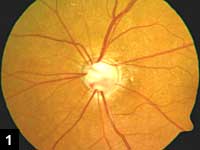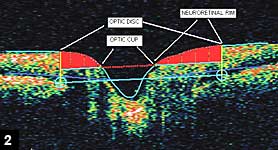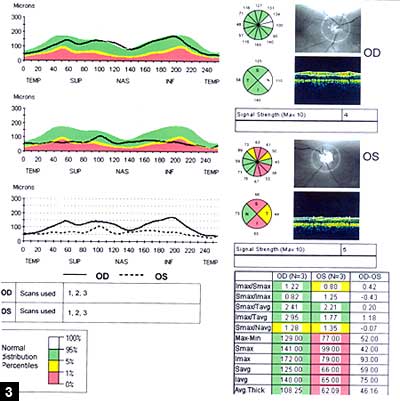Special considerations needed for LASIK in glaucoma patients
IOP, CCT among variables to account for when performing LASIK on patients with glaucoma.

Even though the optic disc and visual field are assuming increasingly important roles in the diagnosis of glaucoma, estimating the baseline IOP and target IOP is still important in the management of glaucoma. In addition, because more patients are opting for refractive procedures to correct myopia, hyperopia, astigmatism and presbyopia, the number of people in this population who will eventually develop glaucoma or ocular hypertension continues to increase.
In this backdrop, it is important to understand the cause-and-effect relationship between IOP and refractive surgery. The problem assumes great significance because myopes, who are the major category of patients undergoing refractive procedures, are especially prone to developing glaucoma.
CCT and IOP
 Amar Agarwal |
Central corneal thickness (CCT) was largely ignored in the armamentarium for diagnosis of glaucoma until the findings of the Ocular Hypertension Treatment Study (OHTS) showed that thinner corneas are an independent risk factor for progression to glaucoma. Although Goldmann acknowledged the role of CCT on IOP measurements by applanation tonometry, the real importance of this factor has come into play only recently, mainly due to the popularity of refractive procedures that change the corneal pachymetry. Because IOP still plays a major role in glaucoma diagnosis and management, estimating the real IOP of the patient irrespective of his corneal thickness is important. The OHTS and other studies have shown that Goldmann’s concept that the effect of pachymetry on IOP is negligible in the normal range of corneal thickness is invalid. It has been shown that IOP can vary between ± 4 mm Hg to 5 mm Hg within the normal pachymetry range.
Because LASIK procedures result in an alteration of the CCT, it is important to do a preoperative dilated, magnified stereoscopic disc evaluation (Figure 1) in all patients with documentation of the findings and, if indicated, to do an optic nerve head analysis (Figure 2), retinal nerve fiber layer (RNFL) analysis (Figure 3) and autoperimetry as baseline evaluation to compare with in the future. It is advisable to give the patient all these data as well for future use. When measuring IOP in post-LASIK patients, the physician should pay particular attention to other criteria for diagnosis of glaucoma; he should also measure IOP from the peripheral, non-ablated areas of the cornea or use a Tono-Pen (Medtronic).
An underestimation of IOP has been seen after myopic LASIK and PRK. A mean decrease of 1.9 mm Hg to 3.8 mm Hg in IOP has been seen after LASIK. Pneumotonometric readings have been shown to be slightly less influenced by post-LASIK corneal changes than applanation tonometry. A decrease in the CCT after myopic LASIK is postulated to be the main cause for obtaining false low IOP measurements. The alteration in biomechanical strength that occurs due to the cut in the cornea in LASIK may be an additional cause for a further decrease in IOP after LASIK.
|
|
Images: Agarwal A |
Measuring CCT
Ultrasound pachymetry is reliable when used properly with the probe held perpendicular to the cornea. It is the most commonly used clinical means of measuring CCT. Other instruments that also measure CCT are the Orbscan (Bausch & Lomb) and partial coherence inferometry, which are both noncontact optical systems.
LASIK may be expected to result in damage to retinal ganglion cells and a decrease in the RNFL. This is due to the extremely high levels that IOP is raised to by the pressure applied during the suction head application and the microkeratome pass. IOP is raised to a level of more than 65 mm Hg, sometimes up to 60 mm Hg to 80 mm Hg.
|
|
Glaucoma patients and LASIK
As LASIK gains more popularity and acceptance, there will be an increase in the number of already diagnosed glaucoma patients who want to undergo LASIK. It would be inadvisable for any patient with moderate to advanced glaucoma to undergo LASIK, not only due to the well-documented problems in measuring IOP leading to problems in monitoring and appropriate management of the glaucomatous status, but also due to the potential for increasing glaucomatous nerve fiber loss and increasing visual field defects due to the transient yet high levels of IOP that occur during LASIK. LASIK may be considered, however, in mild forms of glaucoma in patients who have well-controlled IOP and minimal or no stable field defects. LASIK might also be considered for the contact lens-wearing glaucoma patient who needs filtering surgery. It would be inadvisable to do it in the presence of an existing bleb for fear of damage to the bleb during suction ring application and the microkeratome pass.
In all these patients, a thorough baseline evaluation of the patient’s glaucoma status is necessary before the LASIK procedure, including multiple measurements of diurnal IOP. It would also be advisable to use dynamic contour tonometry, if available, to measure IOP preoperatively as well as for postoperative follow-up of the patient. During the procedure, it is important to be careful to make the microkeratome pass as soon as possible after applying the suction ring and to then release the suction as early as possible. The other alternative in these patients is to do a surface ablation procedure such as PRK. Presbyopes may also undergo CK. Postoperatively, the physician should look out for steroid-induced glaucoma. It is important to use either optical coherence tomography or scanning laser polarimetry with variable corneal compensation for analysis of the RNFL after LASIK in glaucoma patients. If glaucoma is present, one can manage these patients with medication, laser or surgery.
For More Information:
- Amar Agarwal, MS, FRCS, FRCOphth is director of Dr. Agarwal’s Group of Eye Hospitals. Dr. Agarwal is author of several books published by SLACK, Incorporated, publisher of Ocular Surgery News, including Phaco Nightmares: Conquering Cataract Catastrophes, Bimanual Phaco: Mastering the Phakonit/MICS Technique, Dry Eye: A Practical Guide to Ocular Surface Disorders and Stem Cell Surgery, and Presbyopia: A Surgical Textbook. He can be reached at 19 Cathedral Road, Chennai 600 086, India; fax: 91-44-28115871; e-mail: dragarwal@vsnl.com; Web site: www.dragarwal.com.
References:
- Agarwal A. Handbook of Ophthalmology. Thorofare, NJ: SLACK Incorporated; 2005.
- Agarwal A. Phaco Nightmares: Conquering Cataract Catastrophes. Thorofare, NJ: SLACK Incorporated; 2006.
- Agarwal A. Refractive Surgery Nightmares: Conquering Refractive Surgery Catastrophes. Thorofare, NJ: SLACK Incorporated; 2007.
- Agarwal S, Agarwal A, Agarwal A. Four volume textbook of ophthalmology. India: Jaypee; 2000.



